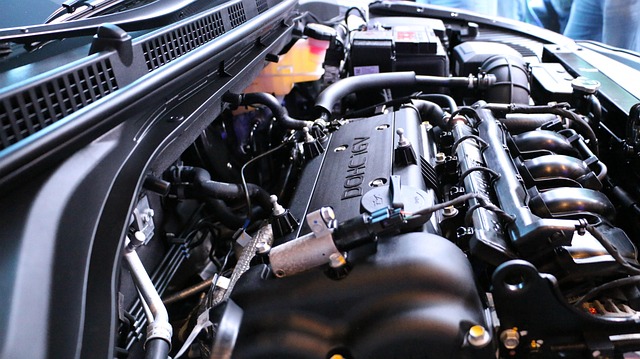Looking to register your car in California? This comprehensive guide walks you through every step, ensuring a smooth process. From understanding vital requirements and gathering essential documents to completing the online registration process, we’ve got you covered. A key part of the journey is the DMV VIN verification, a crucial step before paying fees and receiving your new plates. Let’s dive in!
- Understand California Vehicle Registration Requirements
- Gather Necessary Documents for Car Registration
- Visit Your Local DMV for VIN Verification
- Complete Online Registration Process After VIN Check
- Pay Car Registration Fees and Receive Plate
Understand California Vehicle Registration Requirements

Before registering your car in California, it’s crucial to understand the state’s specific requirements for vehicle registration. According to the California Department of Motor Vehicles (DMV), all vehicles operated on California roads must be properly registered and display valid plates. This includes cars, trucks, motorcycles, and even recreational vehicles. The process involves several steps, including providing proof of insurance, paying applicable fees, and undergoing a vehicle inspection that includes DMV VIN verification.
One important aspect to keep in mind is the availability of mobile VIN inspection services. These services, offered by mobile VIN verifiers, allow you to complete the initial verification process right from your location. A mobile vin inspection ensures that your vehicle’s unique identification number (VIN) is accurately recorded and matched against the DMV’s records, streamlining the registration process and potentially saving you time and effort.
Gather Necessary Documents for Car Registration

Before heading to the California Department of Motor Vehicles (DMV) to register your car, make sure you have all the required documents ready. This process is designed to ensure that vehicles on California roads meet safety and environmental standards. You’ll need the vehicle’s registration certificate from the previous state if it was previously registered. Additionally, a valid driver’s license or ID card is mandatory for everyone involved in the transaction.
One crucial document for car registration in California is the Vehicle Identification Number (VIN) verification. This can be conveniently done using a mobile VIN verifier, which provides accurate and immediate results. The DMV accepts these mobile VIN verifications to confirm vehicle identity and history. Ensure that your vehicle’s title and any loan documents are also present, as this will help facilitate the registration process.
Visit Your Local DMV for VIN Verification

Before you can register your car in California, you’ll need to ensure that your vehicle meets all safety and emission standards. One crucial step in this process is visiting your local DMV for VIN verification. This involves a detailed inspection of your car’s Vehicle Identification Number (VIN), which is a unique code that identifies specific features and specifications of the vehicle.
During the DMV vin verification, a designated official will check various components of your car, including its engine, brakes, lights, and safety features. They’ll also confirm the vehicle’s history through data from California’s Department of Motor Vehicles records to ensure it’s not a stolen vehicle or has any outstanding issues. If your car passes this inspection, you’ll be one step closer to officially registering it in the Golden State. Consider opting for a mobile vin inspection or verification service if convenience is a priority, as these options can save you a trip to the DMV.
Complete Online Registration Process After VIN Check

After passing the DMV’s VIN verification process, which ensures that your vehicle meets all legal standards, it’s time to complete the online registration process. This step is designed to streamline and simplify car registration in California, allowing you to register your vehicle from the comfort of your home or office.
First, gather your necessary documents, including proof of ownership, insurance, and identity. Then, visit the California DMV website and locate the online registration portal. Follow the instructions carefully, inputting all required information accurately. This includes your vehicle’s details, such as make, model, year, and VIN, which was verified during the initial inspection using a mobile vin inspection or a professional vin verifier. Ensure you meet all eligibility criteria to avoid delays in processing your application.
Pay Car Registration Fees and Receive Plate

After completing your car’s registration application at the California DMV, it’s time to settle the fees. The cost of registering a vehicle in California varies based on factors like the type and age of your car. You’ll typically pay a base fee along with taxes and surcharges specific to your vehicle. It’s essential to ensure you’re prepared with valid forms of identification and payment methods accepted by the DMV, including cash, credit cards, or debit cards.
Once your fees are processed, the DMV will conduct a VIN (Vehicle Identification Number) verification and issue your car plates. You can either pick up your license plate in person or, in some cases, opt for mobile vin verification services that allow a licensed inspector to complete the inspection at your convenience using a mobile vin verifier app. This modern approach streamlines the process, offering both efficiency and convenience for California residents.
Registering a car in California is a straightforward process that requires understanding specific requirements and gathering essential documents. By visiting your local DMV for VIN verification and completing the online registration process, you can ensure your vehicle complies with state regulations. Remember to pay the necessary fees and receive your custom license plate as the final step in this efficient procedure, making your car officially registered in the Golden State.
